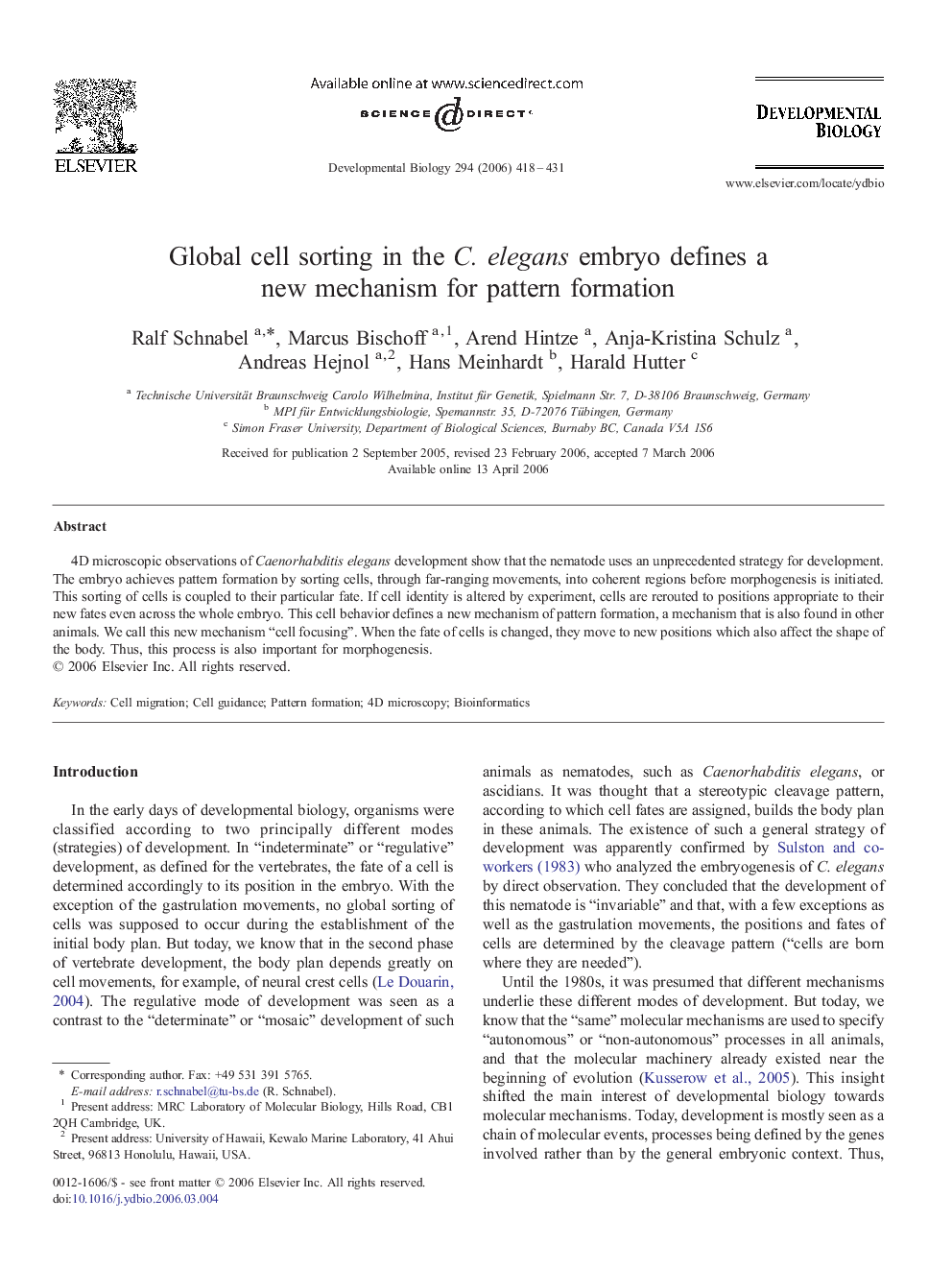| Article ID | Journal | Published Year | Pages | File Type |
|---|---|---|---|---|
| 2175861 | Developmental Biology | 2006 | 14 Pages |
4D microscopic observations of Caenorhabditis elegans development show that the nematode uses an unprecedented strategy for development. The embryo achieves pattern formation by sorting cells, through far-ranging movements, into coherent regions before morphogenesis is initiated. This sorting of cells is coupled to their particular fate. If cell identity is altered by experiment, cells are rerouted to positions appropriate to their new fates even across the whole embryo. This cell behavior defines a new mechanism of pattern formation, a mechanism that is also found in other animals. We call this new mechanism “cell focusing”. When the fate of cells is changed, they move to new positions which also affect the shape of the body. Thus, this process is also important for morphogenesis.
